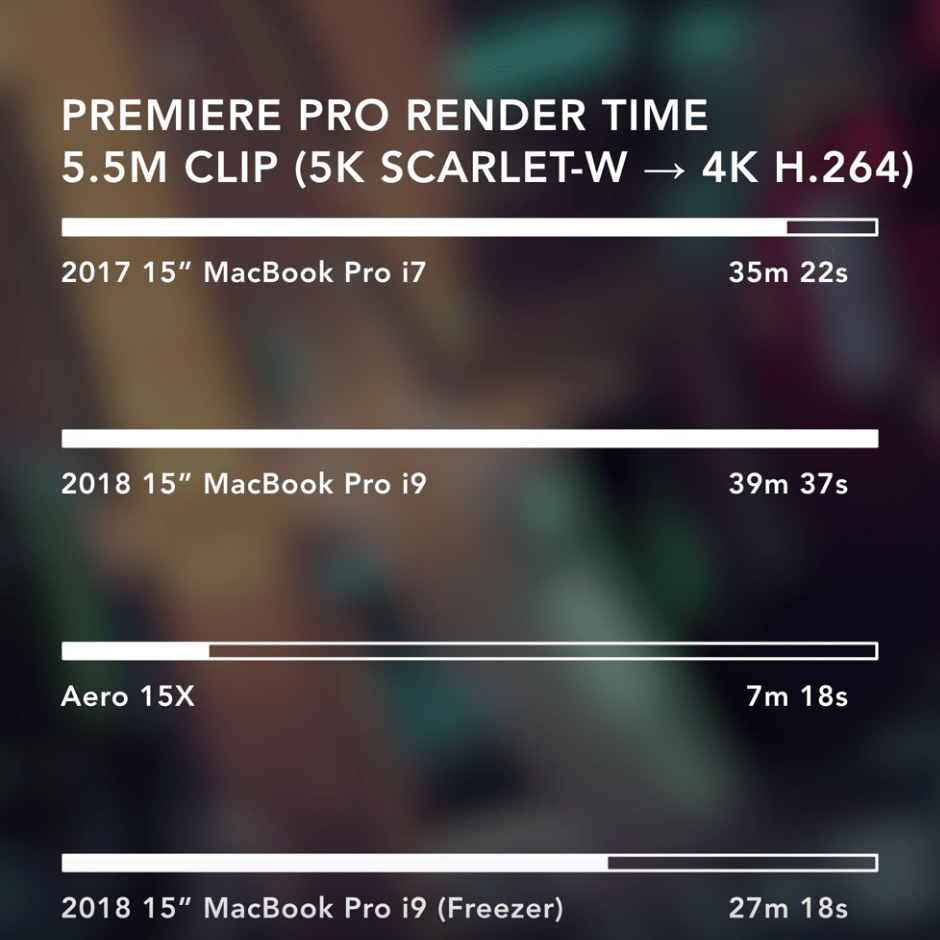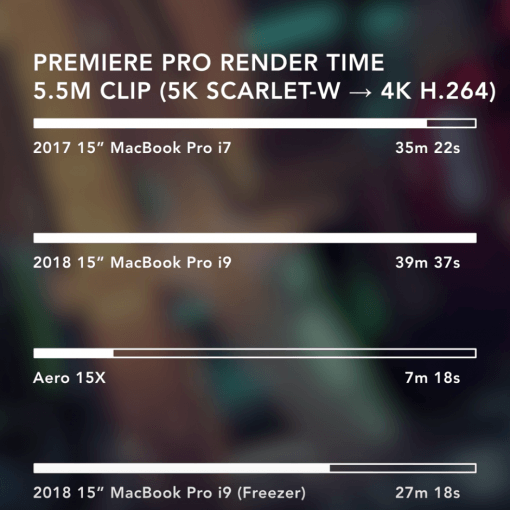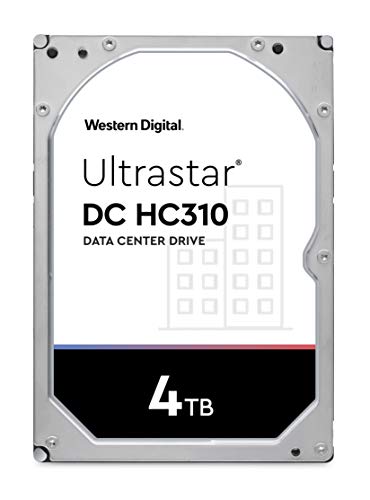The first tests for the 4-core 13″ model and the 6-core 15″ model have arrived. Conclusion: the new CPUs make the devices run very hot.
Heat generated during the calculation process must be dissipated via the cooling system, otherwise the processor throttles performance to prevent damage. And exactly the latter seems to happen with the new 13 as well as the 15.
Intel’s eighth generation i5 and i9 chips are obviously not particularly efficient. In the case of the large MacBook Pro, this means that computing power is greatly reduced at full load. The chip gets so hot that its performance falls below that of the 2017 model.
One of them was Dave Lee, who did the test with an export to Adobe Premiere Pro and the previous model was seven minutes faster. Dave could attribute the problem to the cooling: when calculating inside the refrigerator (no joke) the new model was a good eight minutes faster. Apparently the chip is very powerful, but due to lack of cooling its performance potential cannot be exploited and thus the overall performance even falls below that of the previous year’s model due to the idling.
zollotech has found something similar, this time with the Apple-programmed application Final Cut Pro (Adobe software is not assumed to be sufficiently optimized). However, a similar picture can be seen here: when compressing a 4K video, the older 2017 model is two minutes faster than the 2018 model with i9 processor.
That Intel is probably to blame for this circumstance, one can also see with the 13″ MacBook Pro with 4-core processor. notebookcheck ran on a quad-core MacBook Pro Cinebench R15 and also determined the problematic thermal behavior here. So the processor runs only the first seconds with full 3.6 GHz (Turbo Boost) and pulls around 50 watts, but then switches back very fast and then consumes only between 20 and 40 watts, which is of course reflected in a limited performance. Compared to the previous dual-core processors, this is almost still a doubling of the computing power, but here too the potential of the CPU is not fully exploited.
We keep our eyes open and try to find out whether all test devices have not yet been software-optimized by Apple or whether the Intel processor generation used actually has a heat problem. Maybe another reason to think about our crazy idea. Buyers of 2017 models in 15″ format can now sit back and relax for the first time, as they have the faster calculator currently used in everyday life.





